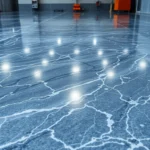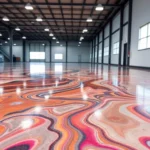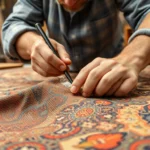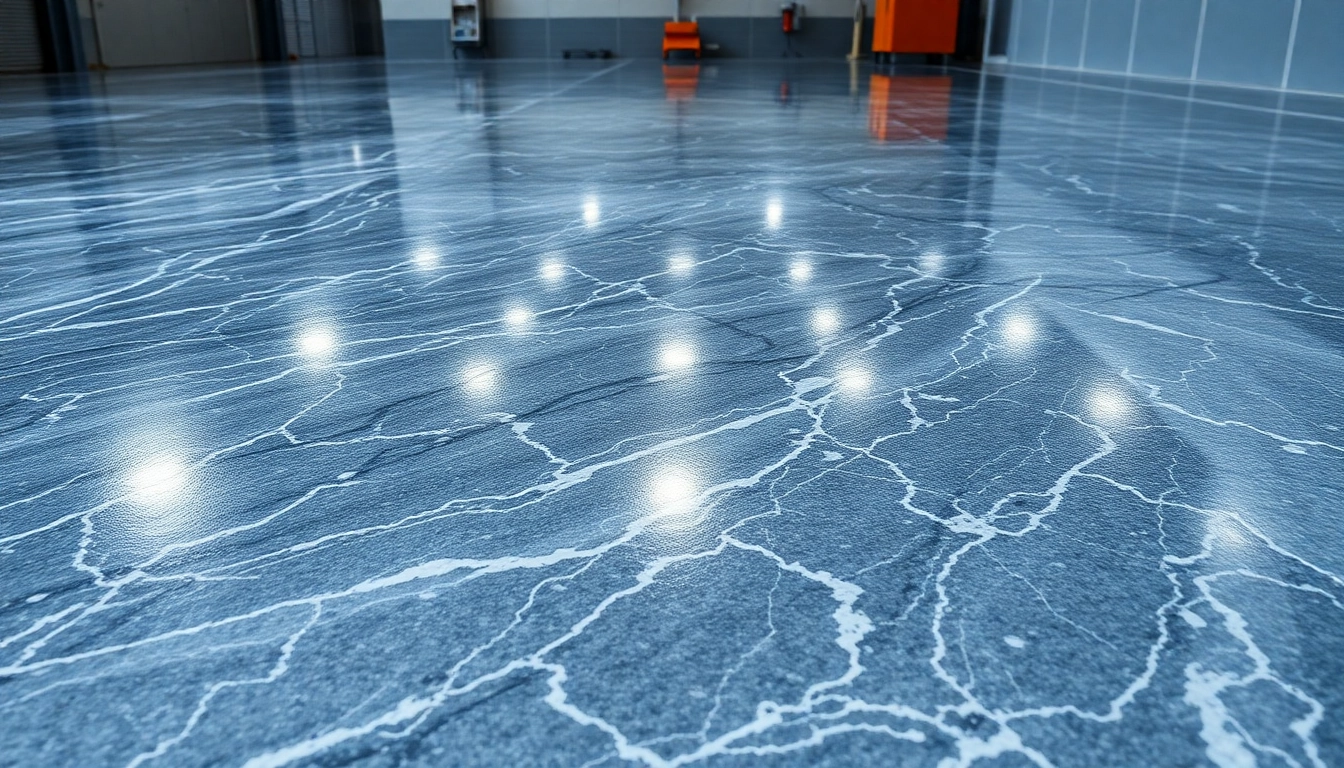Understanding Epoxy Resin Floors and Their Benefits
Epoxy resin floors have gained remarkable popularity in both residential and commercial environments due to their exceptional durability, aesthetic appeal, and versatility. Whether upgrading a garage, warehouse, or retail space, choosing the right epoxy flooring system can dramatically enhance functionality and visual impact. For those considering this investment, understanding what an epoxy resin floor is, how it works, and the myriad benefits it offers is essential. Dive into the comprehensive insights below to discover why epoxy resin floors are a prime choice for modern space enhancements.
To explore high-quality epoxy solutions tailored to your needs, visit Epoxy resin floor for expert advice and professional installation services.
What Is an Epoxy Resin Floor and How Does It Work?
An epoxy resin floor comprises a two-part system: epoxy resin and a hardener, which chemically react when mixed to form a rigid, high-performance coating. When applied to a prepared concrete surface, this material undergoes a curing process that creates a solid, seamless, and durable surface layer. Its molecular structure bonds tightly with the concrete, creating a bond that resists peeling, cracking, and chemical damage.
Commercially available epoxy kits, like the Rockhard USA 3 Gallon Kit, are designed for both DIY enthusiasts and professionals. These self-leveling, chemical-resistant products ensure a smooth, aesthetically pleasing finish while providing resilience against wear and tear.
Advantages: Durability, Aesthetic Appeal, and Maintenance
Epoxy floors are celebrated for their impressive durability. They withstand heavy foot traffic, machinery, and impacts, making them ideal for industrial settings. Their chemical resistance provides protection against spills, stains, and corrosive substances, extending the lifespan of the underlying concrete.
From an aesthetic perspective, epoxy coatings can be customized with various colors, textures, and effects, including metallic finishes and decorative flakes, to create striking visual environments. The seamless surface also simplifies cleaning and maintenance, as there are no grout lines or crevices where dirt and bacteria can accumulate.
Additionally, epoxy flooring is easy to maintain—regular sweeping and occasional mopping with mild cleaners keep the surface looking new—thus reducing long-term upkeep costs markedly.
Common Applications in Residential and Commercial Settings
Residential applications include garage floors, basements, and home workshops where durability and aesthetics are desired. In commercial settings, epoxy floors are prevalent in retail stores, warehouses, manufacturing plants, and healthcare facilities, owing to their ability to withstand high traffic and chemical exposure.
Industrial facilities benefit from epoxy’s chemical resistance and high-impact strength, while aesthetic customization options make it suitable for showrooms and boutique retail spaces. The versatility of epoxy flooring systems ensures they can be tailored to fit various functional and decorative needs.
Step-by-Step Guide to Installing an Epoxy Resin Floor
Preparing Your Concrete Surface for Optimal Results
Proper surface preparation is critical to ensure bond strength and longevity. The process involves cleaning the concrete thoroughly to remove oil, dirt, and loose debris—often using degreasers and pressure washers. Next, any existing cracks or surface imperfections should be repaired with patching compounds.
Surface etching or grinding enhances adhesion by creating a rough profile for the epoxy to bond onto. Using a diamond grinder or acid etching process can help achieve the optimal surface texture. Ensuring the concrete is dry and free of moisture prior to application further enhances adhesion and curing.
Choosing the Right Epoxy Kit and Equipment
Selecting the ideal epoxy kit depends on your specific project requirements—whether for a light residential space or a heavy-duty commercial floor. Consider factors such as chemical resistance, UV stability, and ease of application. Popular options include self-leveling epoxies for smooth finishes or mortar epoxies for load-bearing, textured surfaces.
Essential equipment includes mixers, rollers or squeegees, protective gear, and, in some cases, spray guns for larger surfaces. Professional-grade kits with detailed instructions can facilitate a flawless installation for DIY projects, but consulting professionals may be advisable for large or complex areas.
Application Techniques and Tips for a Flawless Finish
Application begins with mixing epoxy components thoroughly in accordance with the manufacturer’s instructions. Pouring or spreading the mixture evenly using rollers or notched squeegees helps achieve a uniform coating. Maintaining proper working conditions—temperature between 10°C and 30°C and low humidity—ensures proper curing and adhesion.
For enhanced aesthetic effects, techniques such as broadcasting decorative flake additives or metallic powders during application can create unique patterns and textures. To avoid bubbles, apply the epoxy in thin coats and use a squeegee or a heat gun to eliminate trapped air. Multiple coats may be needed for increased durability and color depth, with appropriate curing time between layers.
Design Options and Customization of Epoxy Floors
Color, Texture, and Pattern Choices to Match Your Style
The visual versatility of epoxy allows for extensive customization. Color options range from solid hues to epoxy paints with metallic or pearl effects. Texture can be added with aggregates or anti-slip additives, creating functional surfaces with safety features.
Patterns can be created using tape masking, stenciling, or resin tinted techniques. This allows homeowners and business owners to align their flooring design with branding, interior decor, or personal tastes, resulting in a truly bespoke appearance.
Adding Special Effects: Metallic, Flakes, and 3D Designs
Special effects significantly elevate the aesthetic quality of epoxy floors. Metallic epoxy, for instance, produces a flowing, marbled look reminiscent of natural stone or water. Decorative flakes can add texture, color depth, and slip resistance, while 3D designs leverage embossed overlays to create immersive visual illusions.
Implementing these effects requires careful planning and application during the coating process, often involving multiple steps and specialized products to achieve professional results.
Maintaining and Caring for Your Epoxy Floor Over Time
Regular maintenance involves sweeping away dust and debris, followed by periodic mopping with a neutral cleaner. Protecting the surface from dragging heavy objects and using mats or pads can prevent scratches and dents.
Occasional recoating or polishing can restore gloss and protective properties, especially in high-traffic areas. Addressing spills promptly and avoiding harsh chemicals prolongs the lifespan of your epoxy floor, ensuring investment longevity.
Comparing Different Types of Epoxy and Related Coatings
Self-Leveling vs. Mortar Epoxy Floors
Self-leveling epoxies are designed for smooth, seamless finishes, ideal for garage floors, showrooms, or areas requiring aesthetic appeal. They flow easily during application, creating a flat surface that minimizes imperfections.
Mortar epoxies incorporate aggregate mixtures, providing increased thickness and strength, suitable for industrial settings or heavy-duty traffic. They can also help bridge cracks or surface defects in existing concrete.
Polyaspartic and Other Alternatives for Specific Needs
Polyaspartic coatings are fast-curing, UV-stable alternatives to traditional epoxy, making them perfect for outdoor applications where sunlight exposure can cause epoxy discoloration. They offer excellent chemical and impact resistance and can be applied in a single day.
Choosing between epoxy, polyaspartic, or hybrid systems depends on project-specific factors—such as exposure conditions, budget, and desired curing time.
Cost, Longevity, and Performance Metrics
Epoxy flooring costs vary based on type, surface preparation, and customization but typically range from $3 to $10 per square foot. While epoxy systems may initially be more expensive than traditional concrete, their durability and aesthetic benefits provide excellent long-term value.
With appropriate installation and maintenance, epoxy floors can last 10-20 years, depending on environmental conditions and usage. Their resistance to wear, chemicals, and impact makes them a reliable choice for demanding environments.
Expert Tips and Common Challenges in Epoxy Floor Projects
Avoiding Common Installation Mistakes
Key pitfalls include improper surface preparation, mixing errors, applying in unsuitable weather, and rushing curing times. Ensuring comprehensive cleaning, correct mixing ratios, and optimal environmental conditions can prevent issues like bubbling, peeling, or poor adhesion.
Additionally, following manufacturer instructions meticulously—such as waiting between coats—is crucial for achieving a professional finish.
Weather and Environmental Factors to Consider
Extreme temperatures, high humidity, or moisture in concrete can adversely affect epoxy curing. Installing epoxy in conditions outside recommended ranges can lead to incomplete curing, cloudiness, or adhesion failures.
In outdoor applications, UV exposure may require UV-stable epoxy or additional sealers to maintain appearance and durability. Planning project timing based on weather forecasts ensures optimal results.
When to Call Professionals vs. DIY Approaches
While smaller DIY projects are feasible with quality kits and detailed tutorials, larger or complex installations benefit from professional expertise—especially when considering intricate designs or extensive surface preparation.
Professional installers bring advanced equipment, tailored solutions, and experience that reduce errors and deliver superior aesthetics. Investing in skilled help often results in long-term savings through fewer repairs and enhanced longevity.









